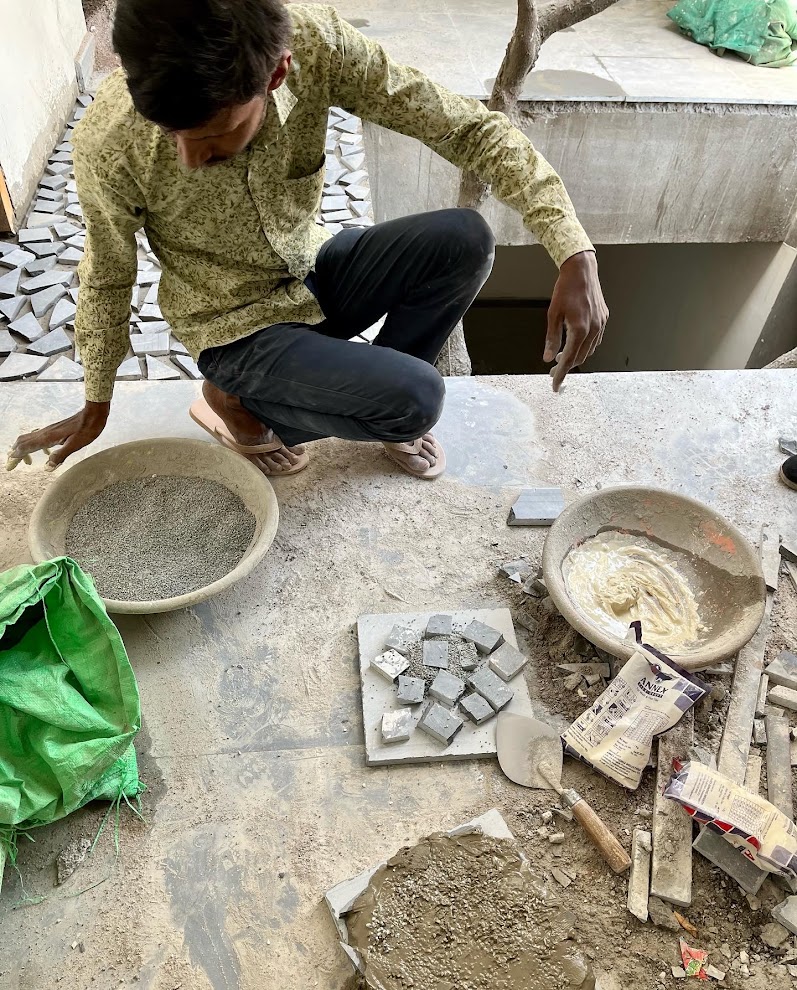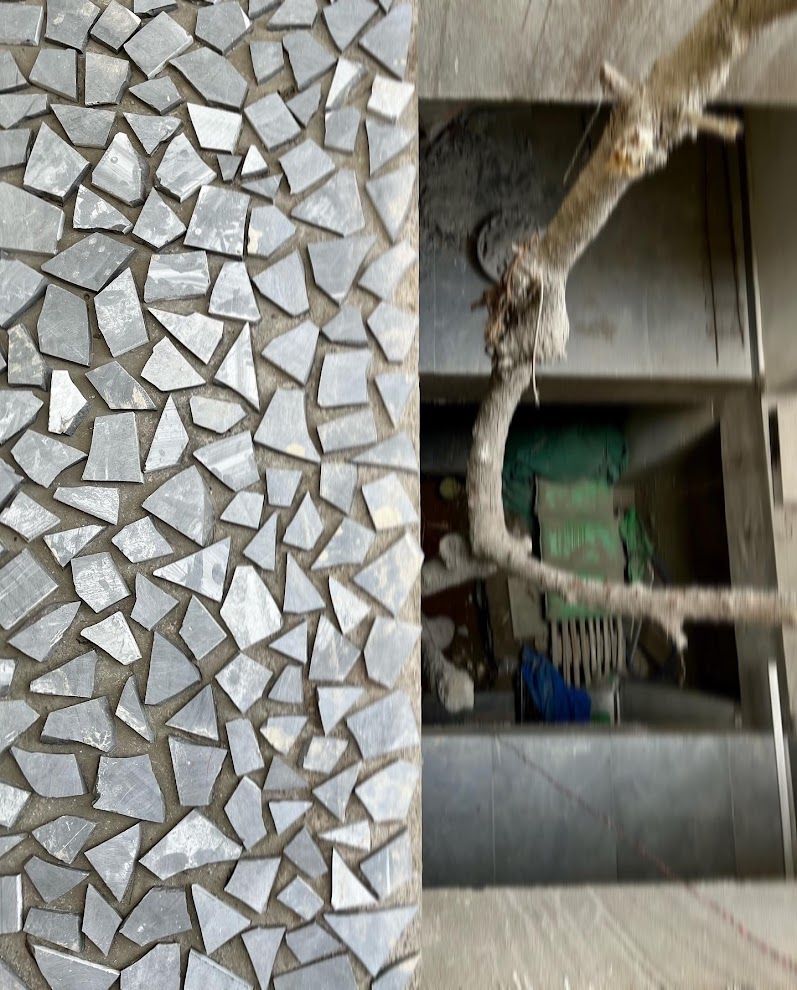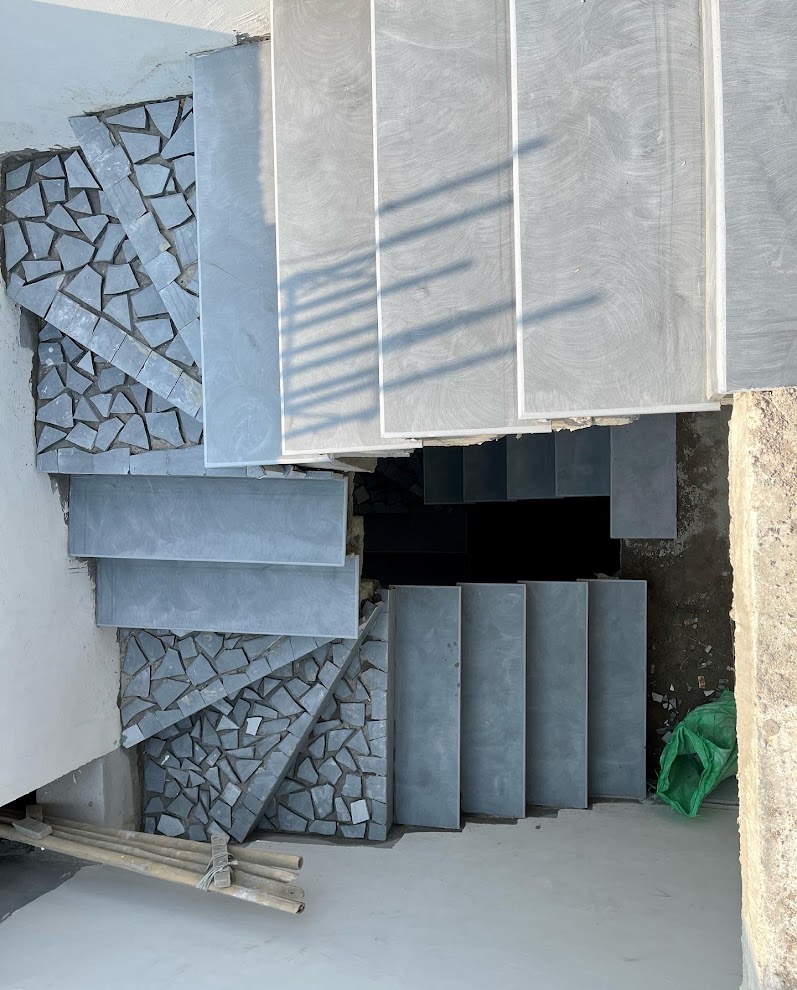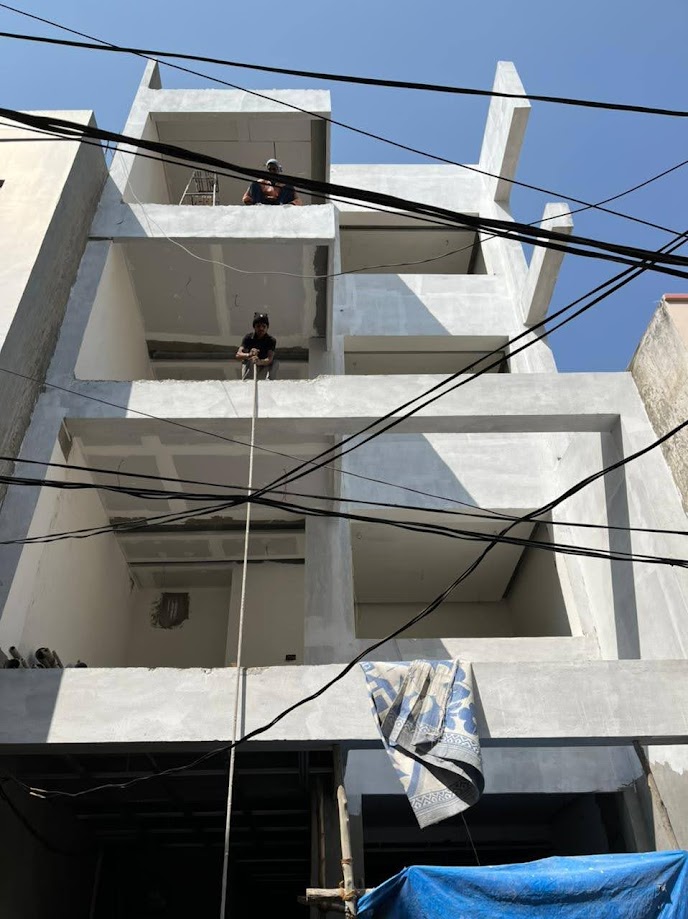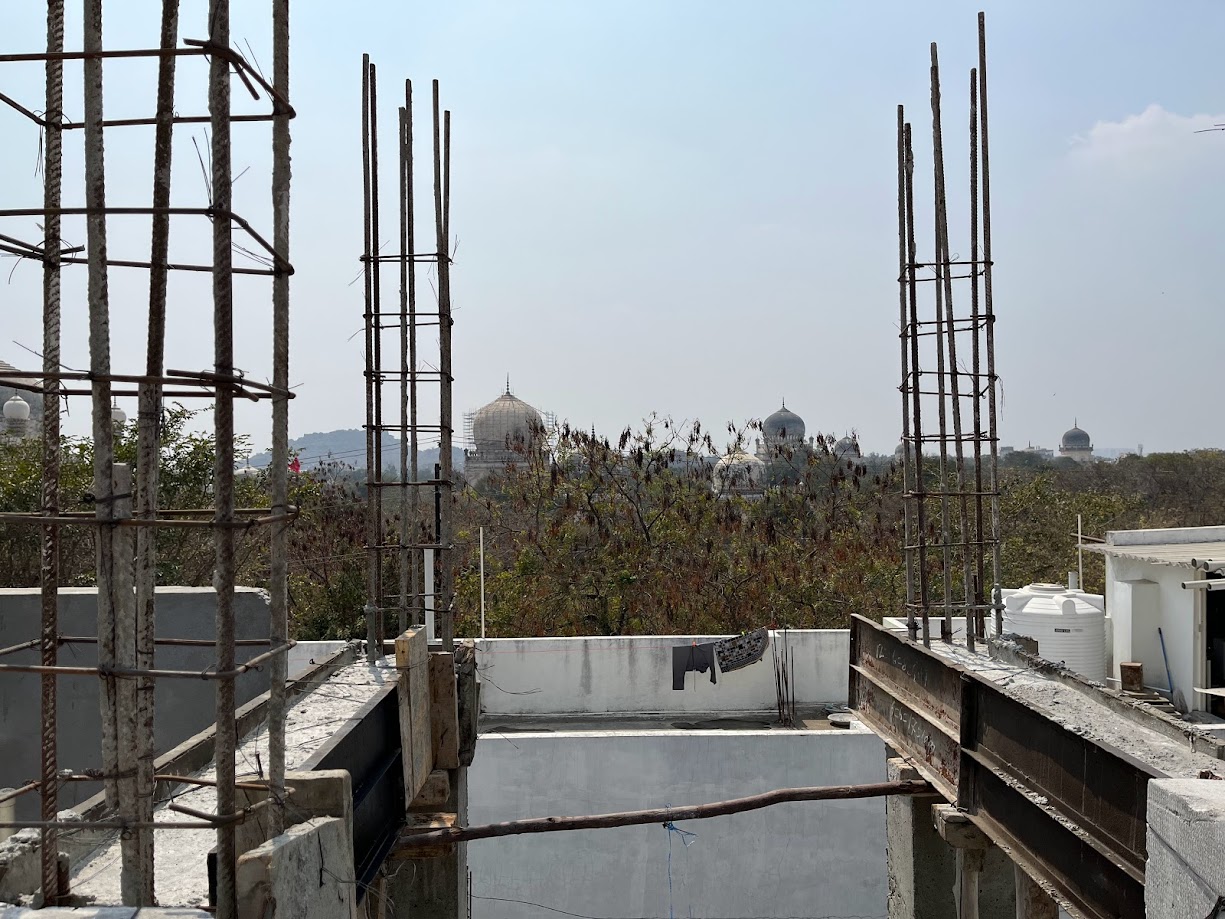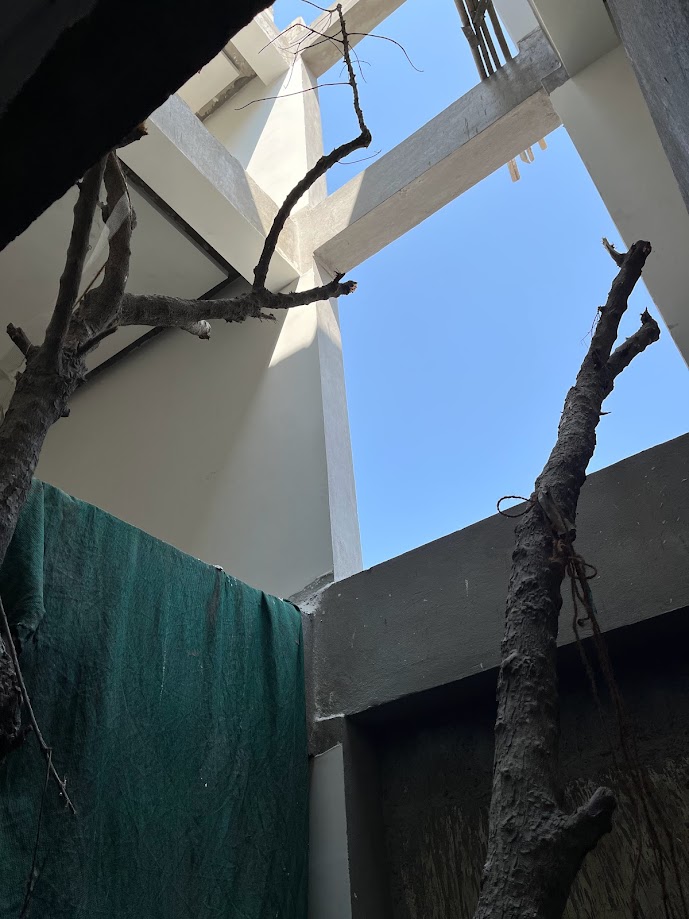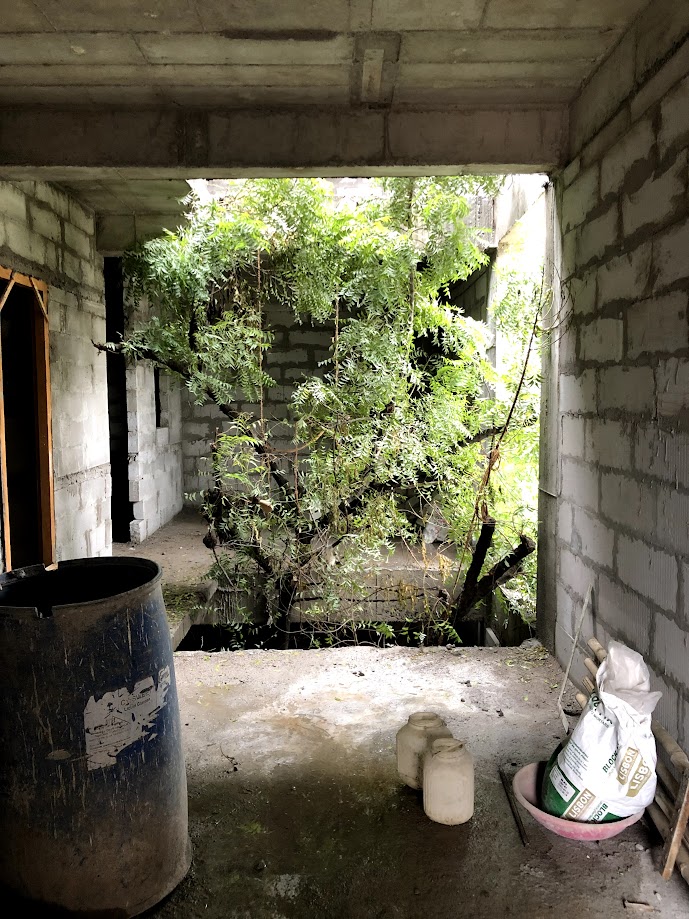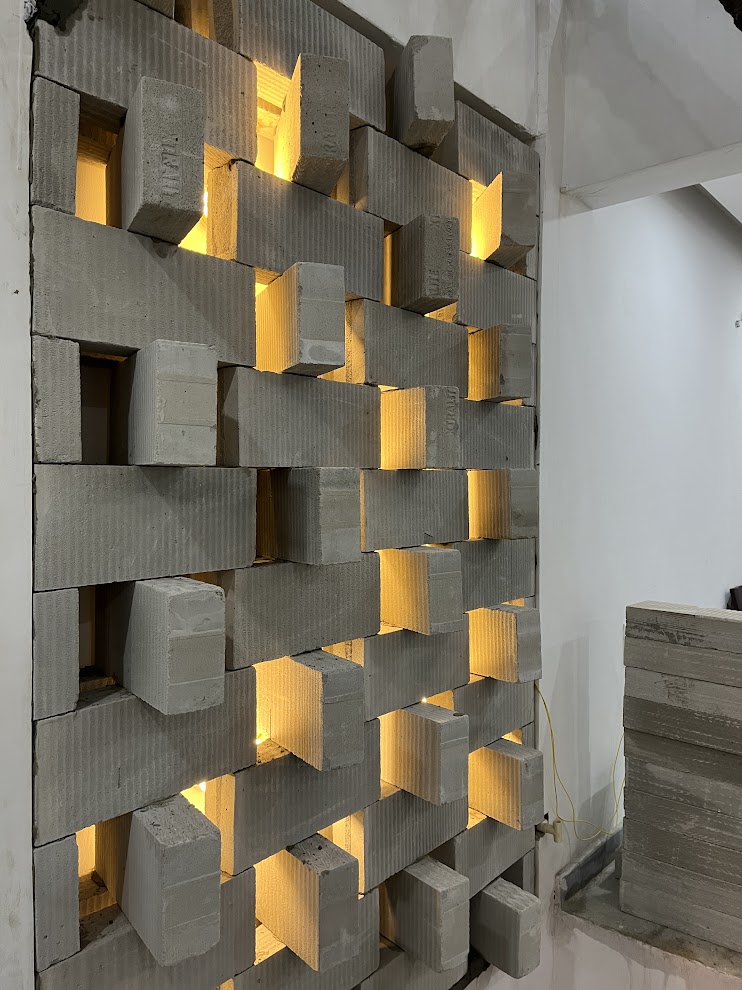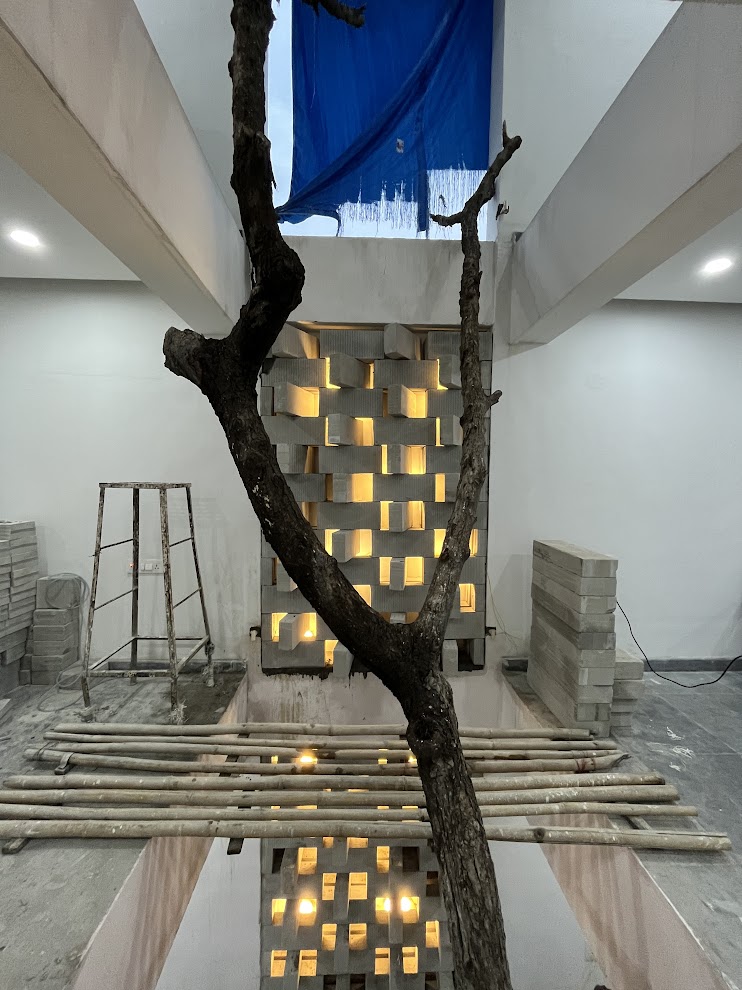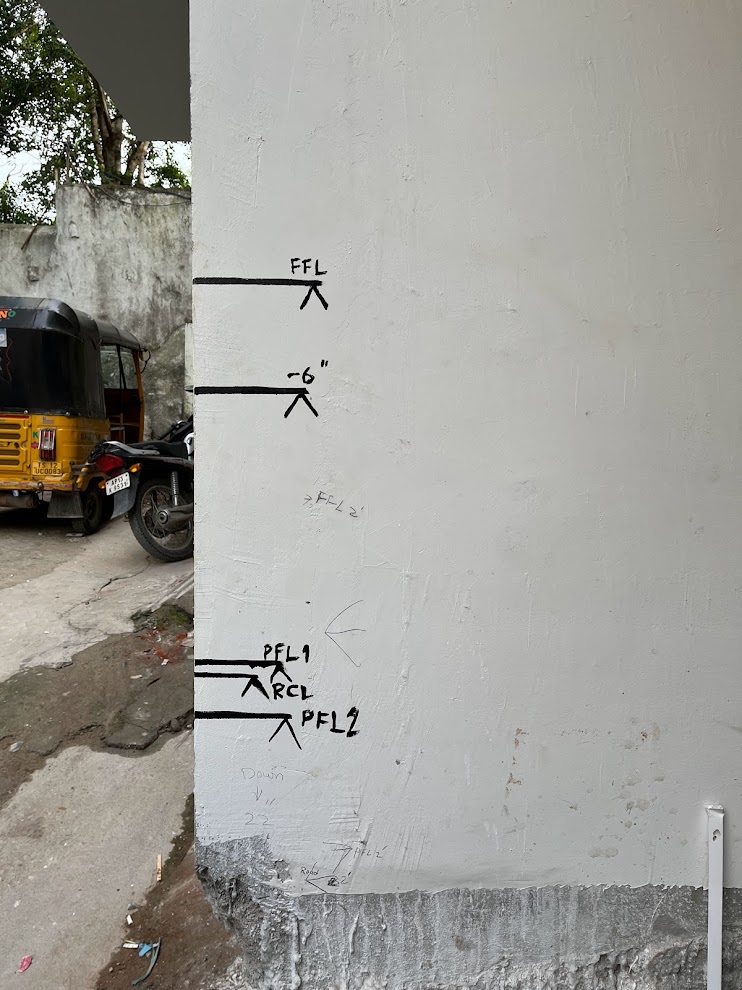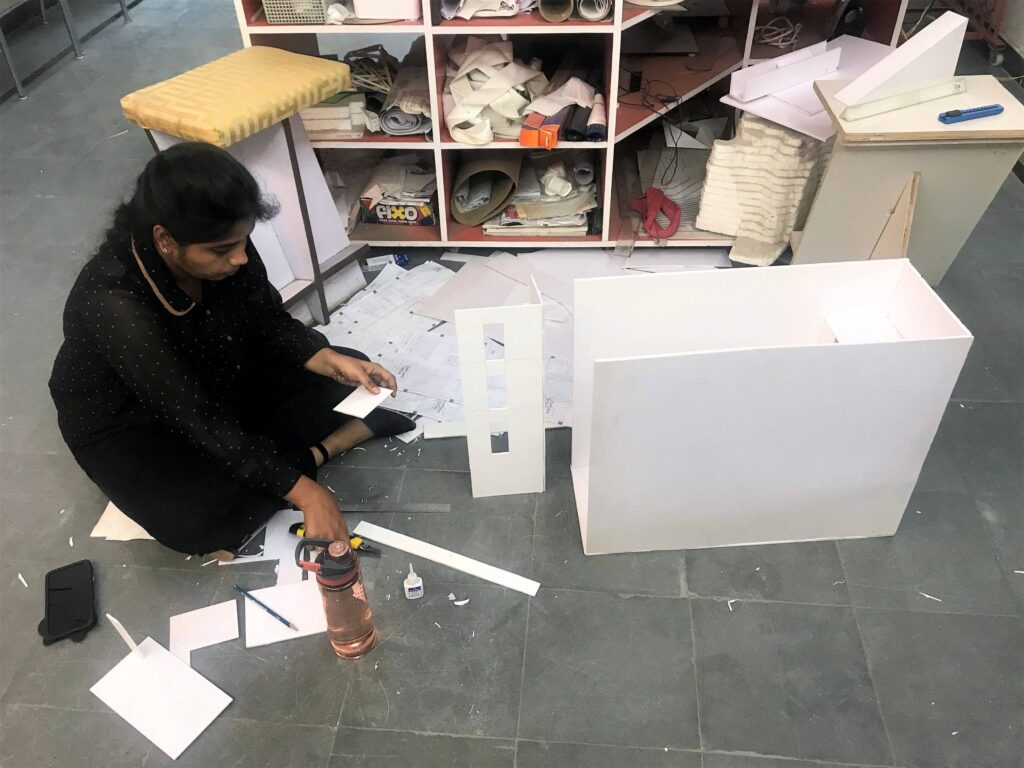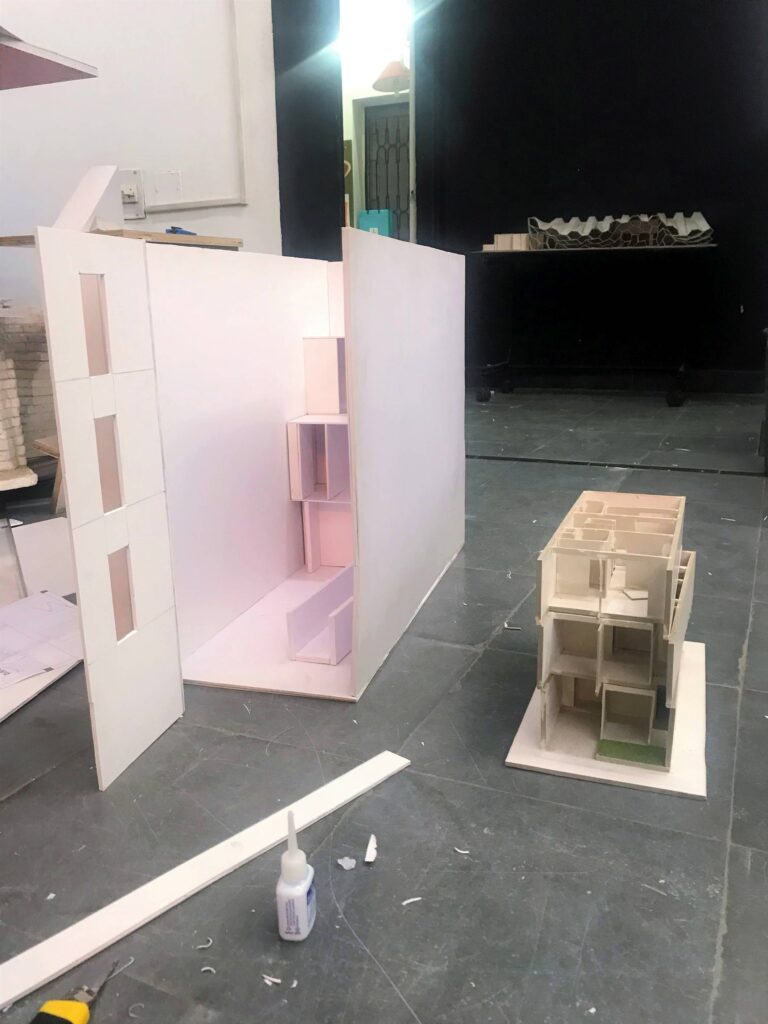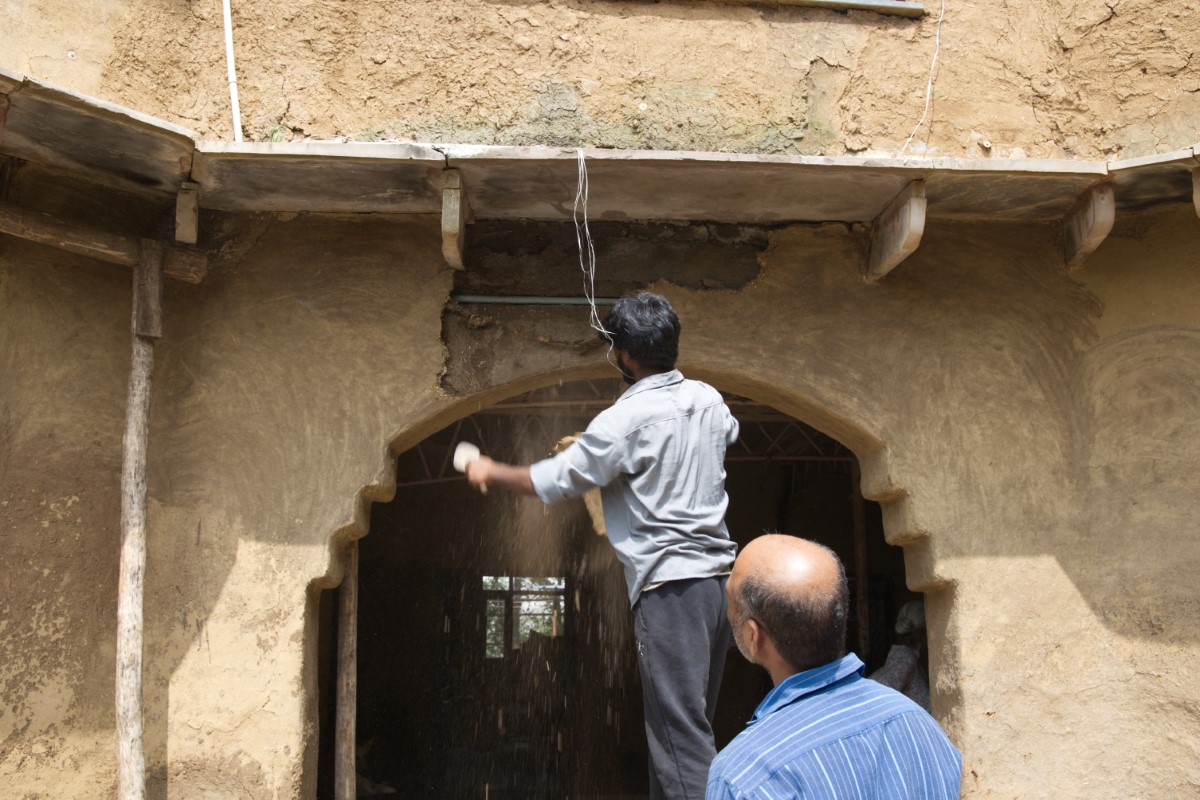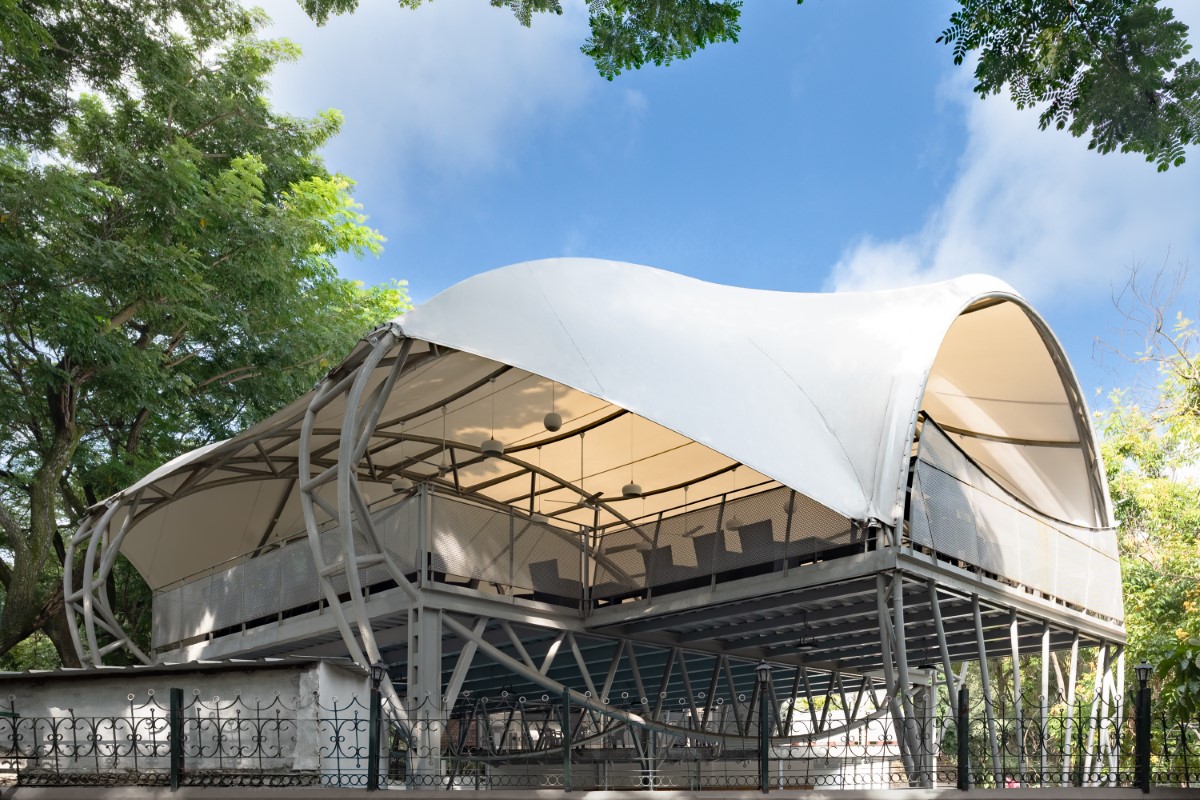A House as Narrow as a Ribbon
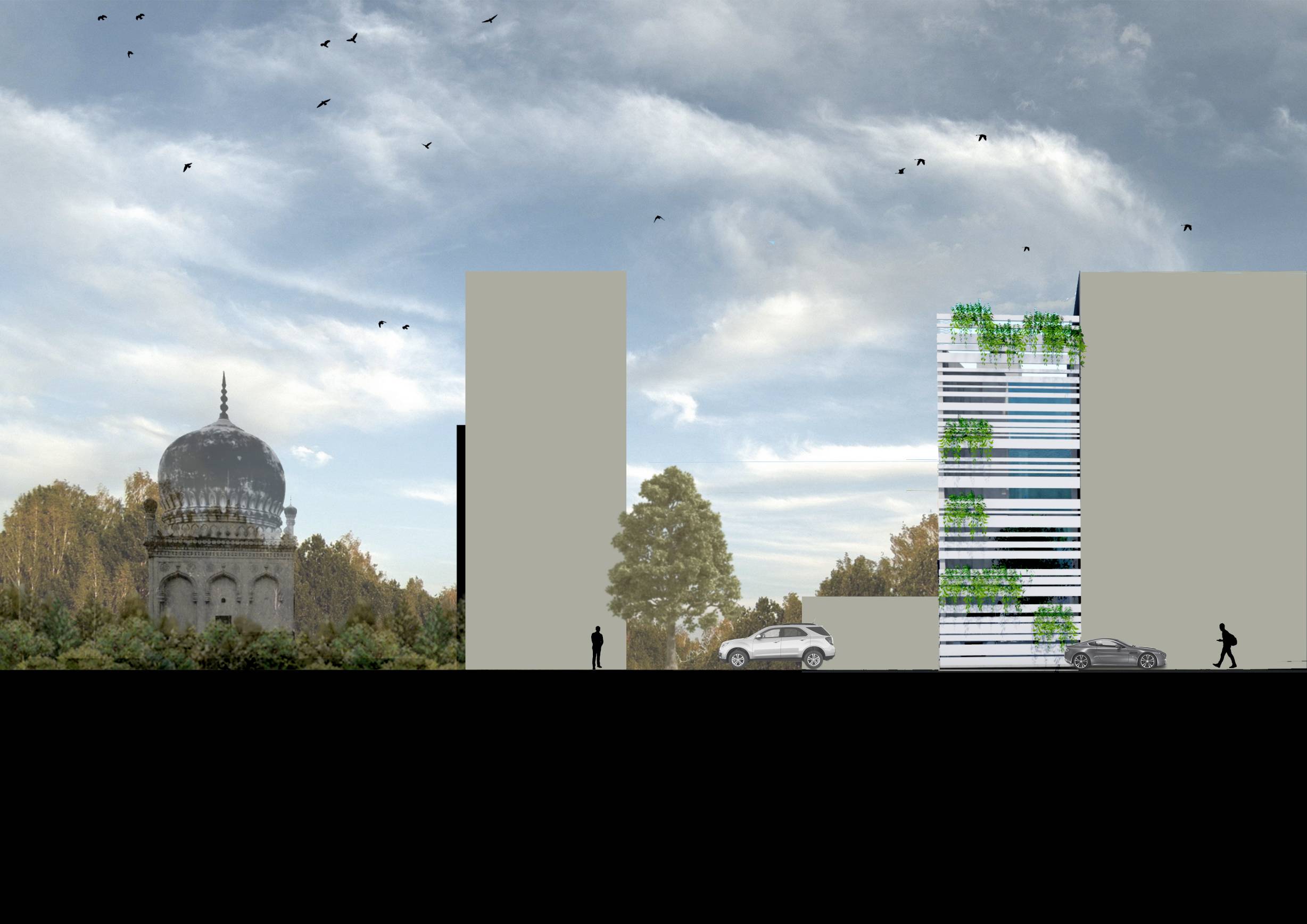
The site is a tiny plot of 100 sq yards located in a tight residential context near the 16th-century royal mausoleum complex, the Qutb Shahi Tombs, in Hyderabad, India. The plot was surrounded by neighbouring houses with shared walls on three sides and had a pair of neem trees towards the centre. The brief called for two housing units for a brother and sister. The foremost concern was to preserve the existing trees and bring in natural light and ventilation while maximizing the built space.
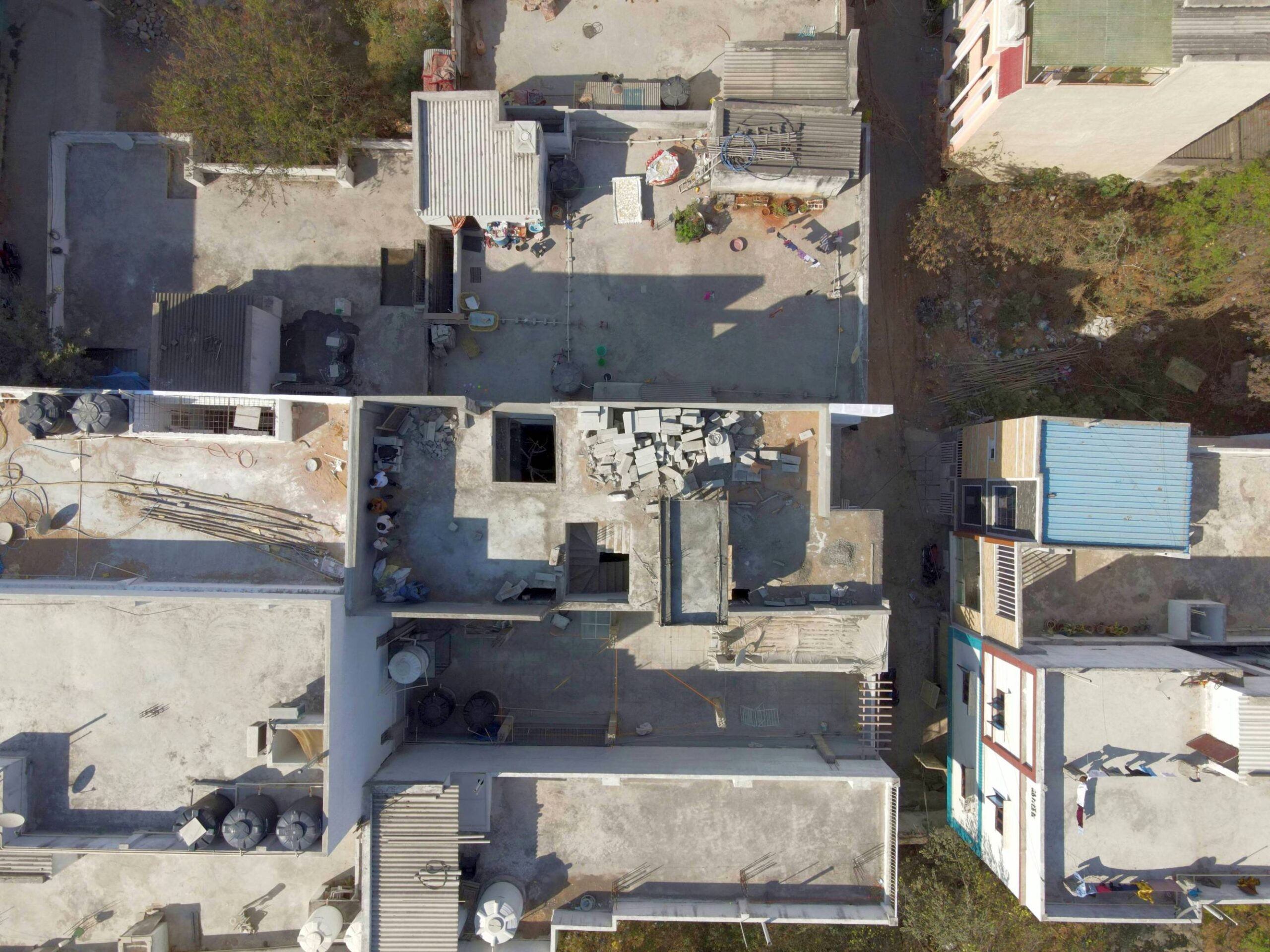
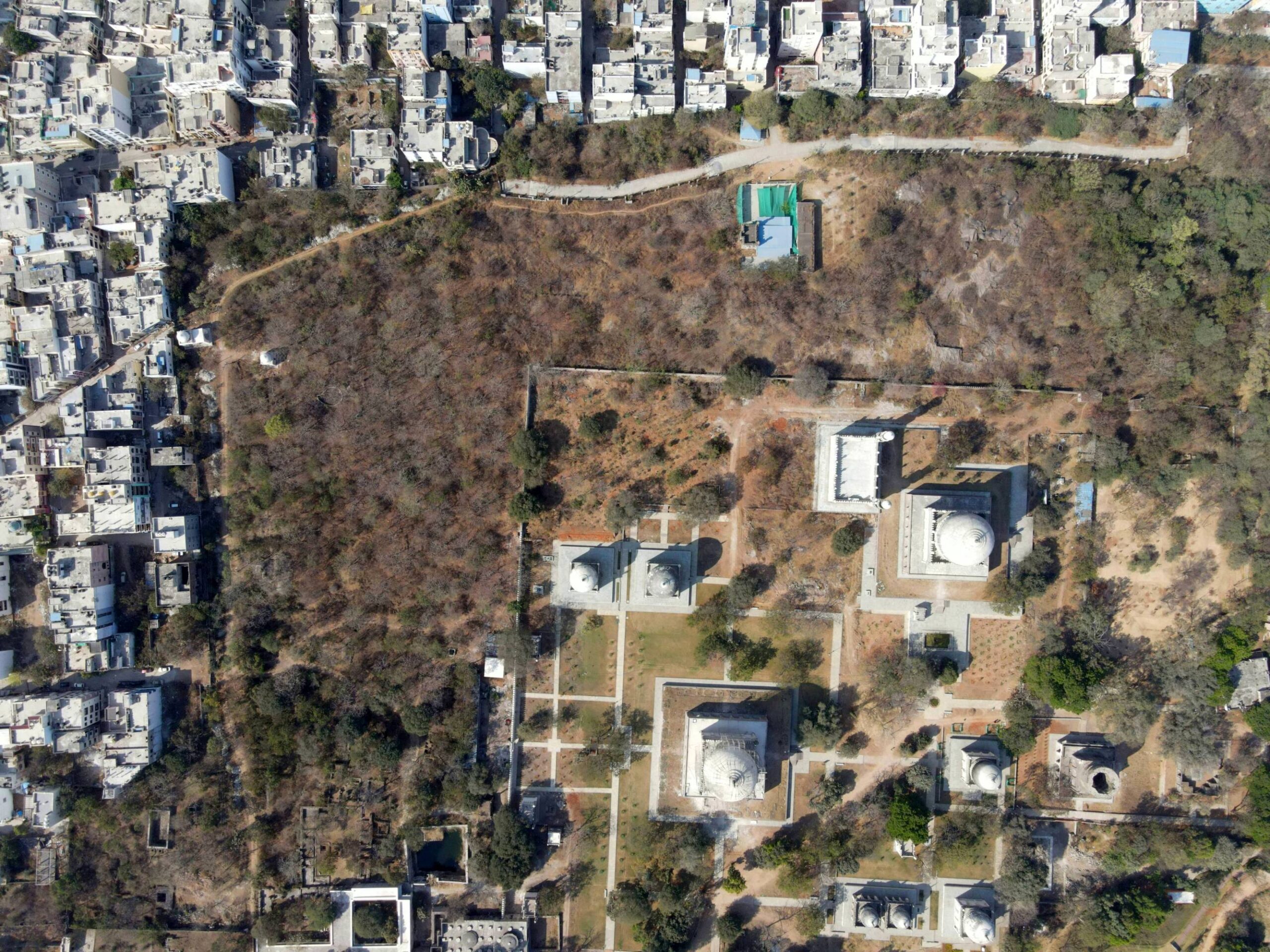
Being located in the Heritage Zone, it was important to pay homage to the vernacular architectural vocabulary. Elements from traditional local homes were used: courtyard, verandah, and jaali. A void was created around the trees as a green space for ventilation and daylighting in the absence of exterior walls and windows. This makes the house inward-looking. Verandahs overlook this green space. A jaali or ribbon-like front façade allows for ventilation and access to the greenery in the front yard via the internal balconies and large bedroom windows, while providing privacy. Due to limited area, many space-saving measures have to be adopted. The colour palette was intentionally restrained, while dominant to create a sense of spaciousness. Locally-sourced Tandur blue slate was used on the floor, and in-situ mosaic flooring was created using stone wastage to demarcate semi-open spaces within the broken plan. The rooftop terrace affords beautiful views of the Qutb Shahi Tombs and its green complex, and the Golconda Fort.
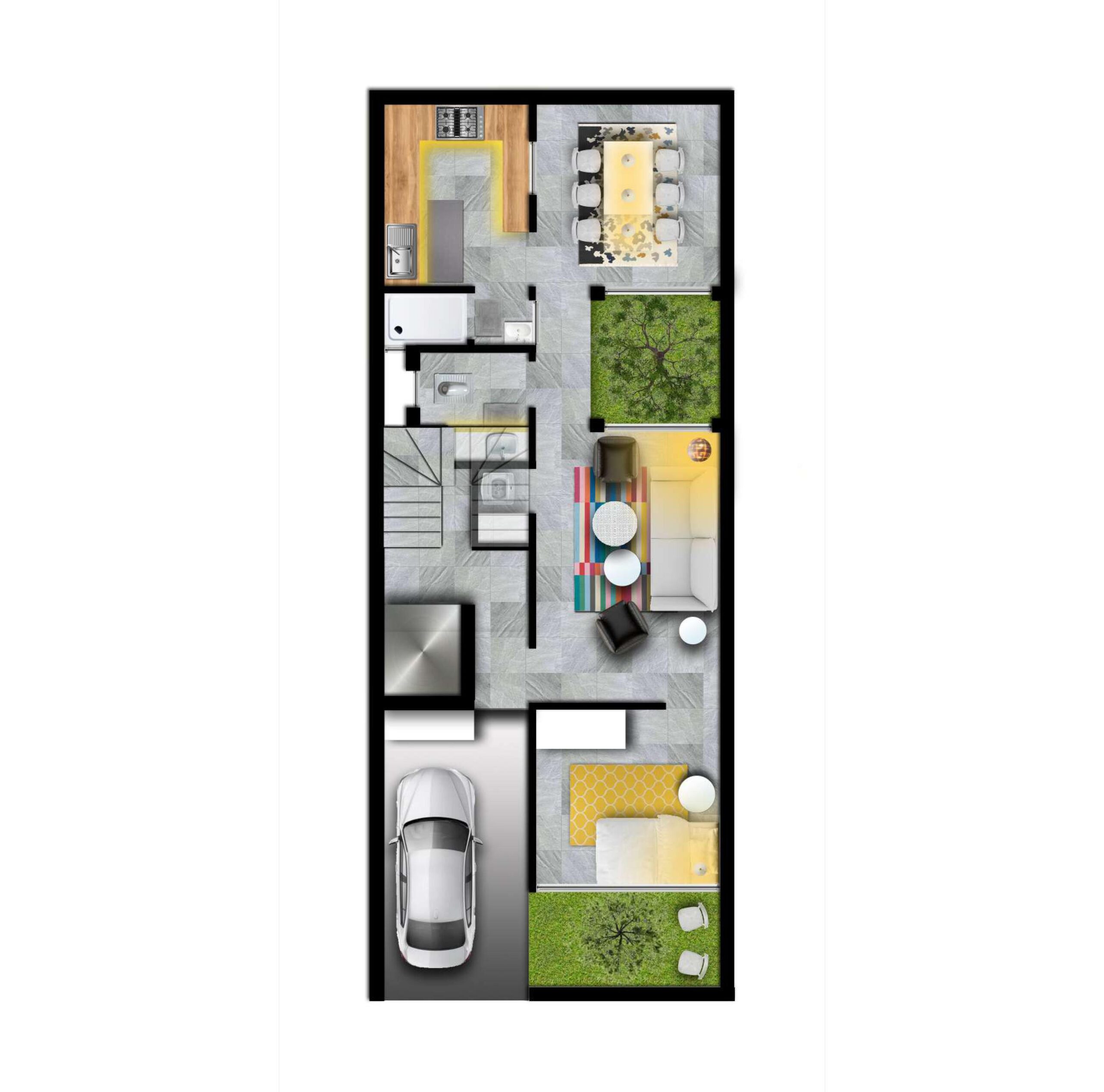
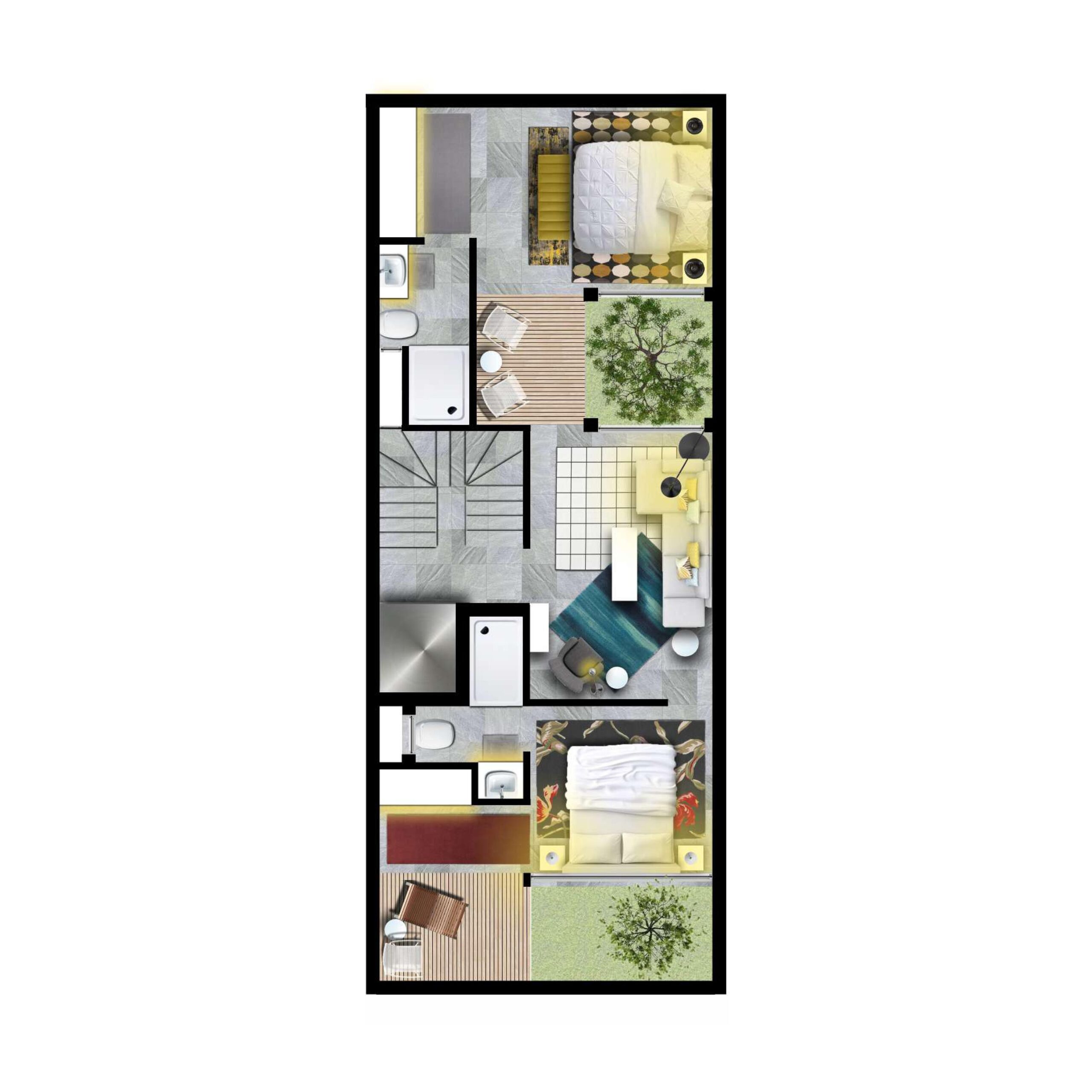
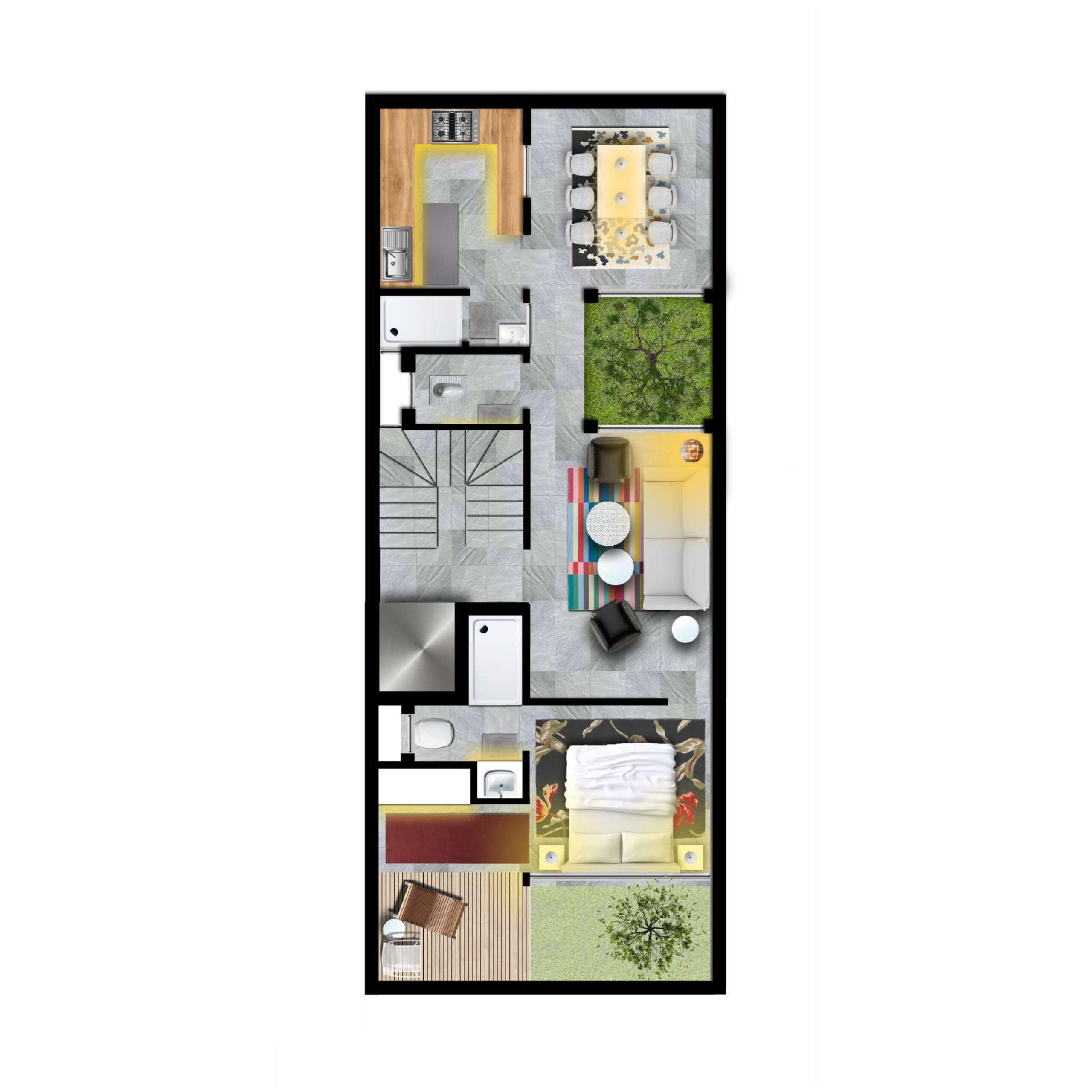
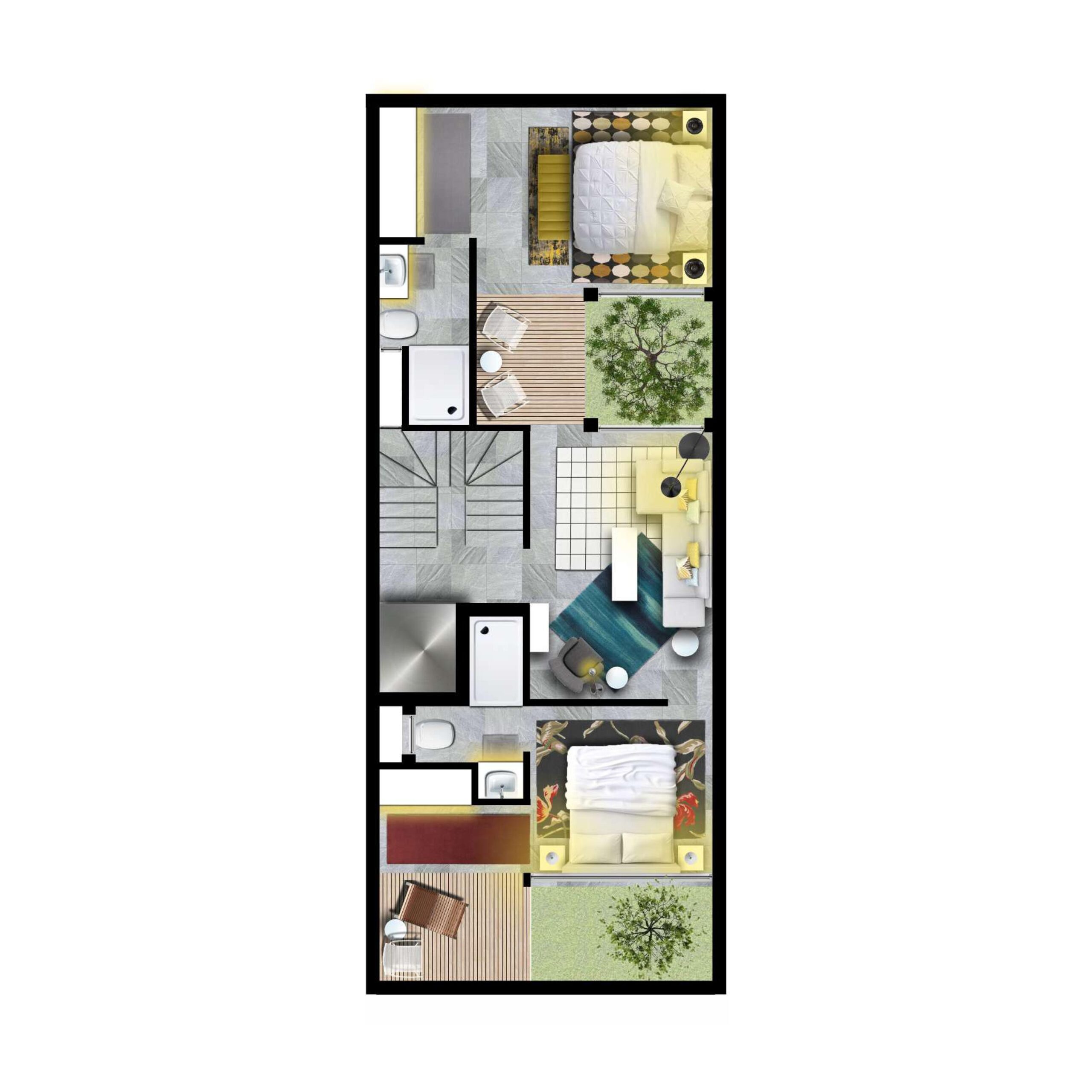
Once the design was completed, the client asked us to take up execution as well. After many halts due to the pandemic and its aftereffects, the project has resumed construction.

Though it is a very small site, the hilly topography of the area posed a challenge. Being involved in execution gave us greater control over the quality of the built space and details, and allowed us to take design decisions on-site during construction. We are also exploring the use of Augmented Reality tools for on-site fabrication and assembly of certain design elements, such as a perforated parametric concrete block wall for ventilation.
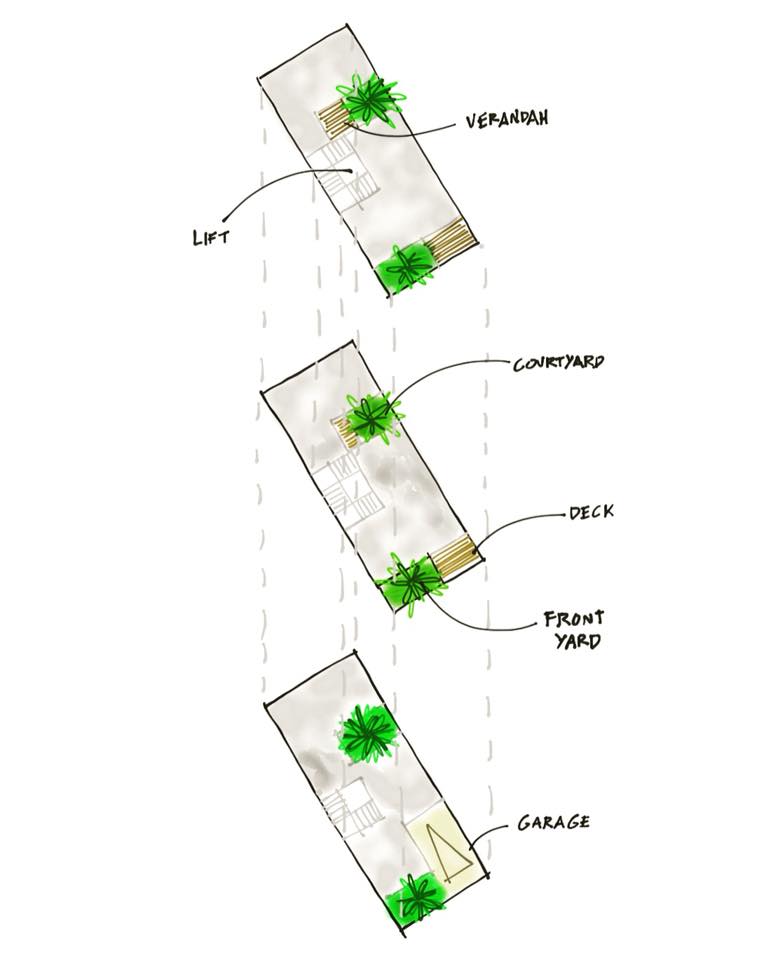
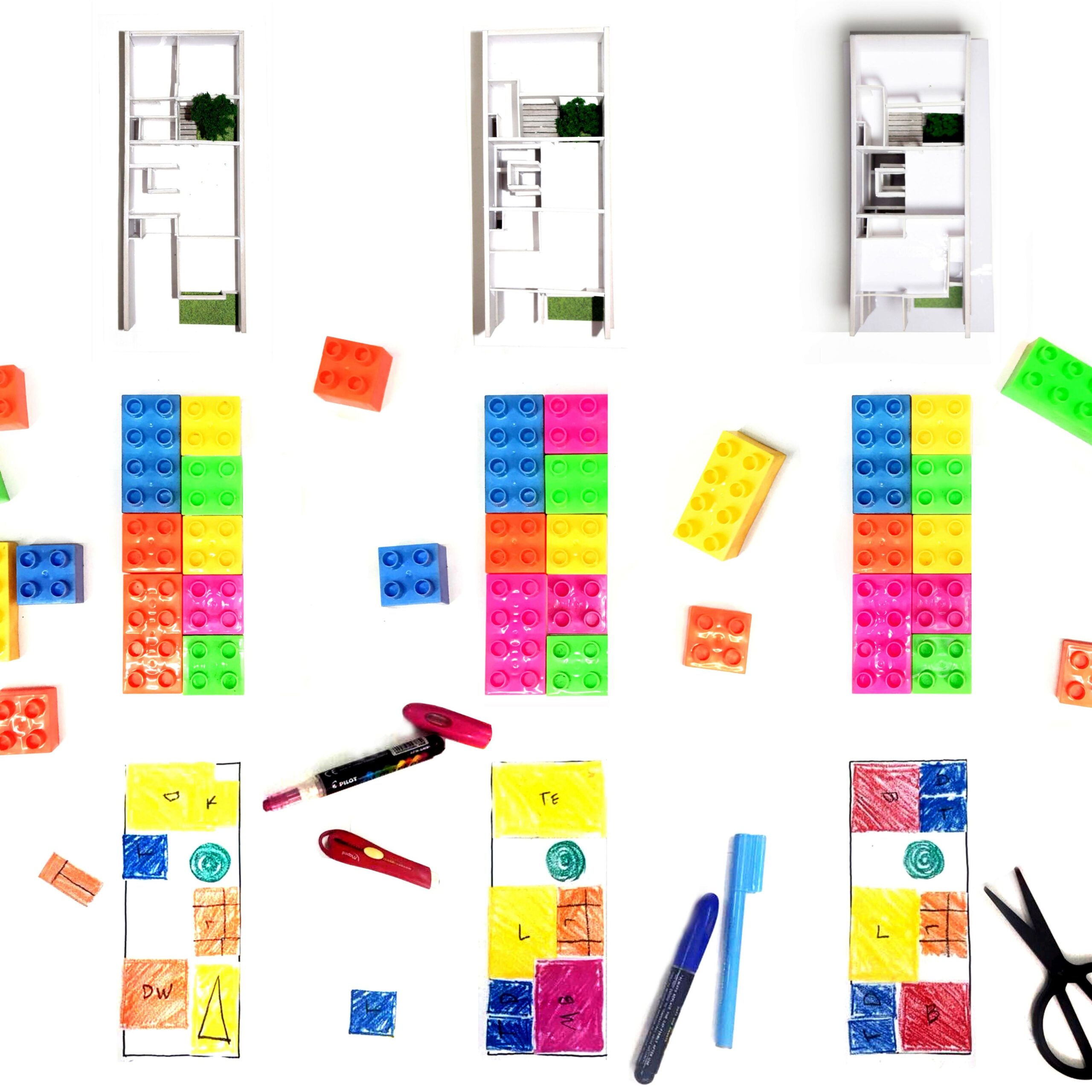
Drawings
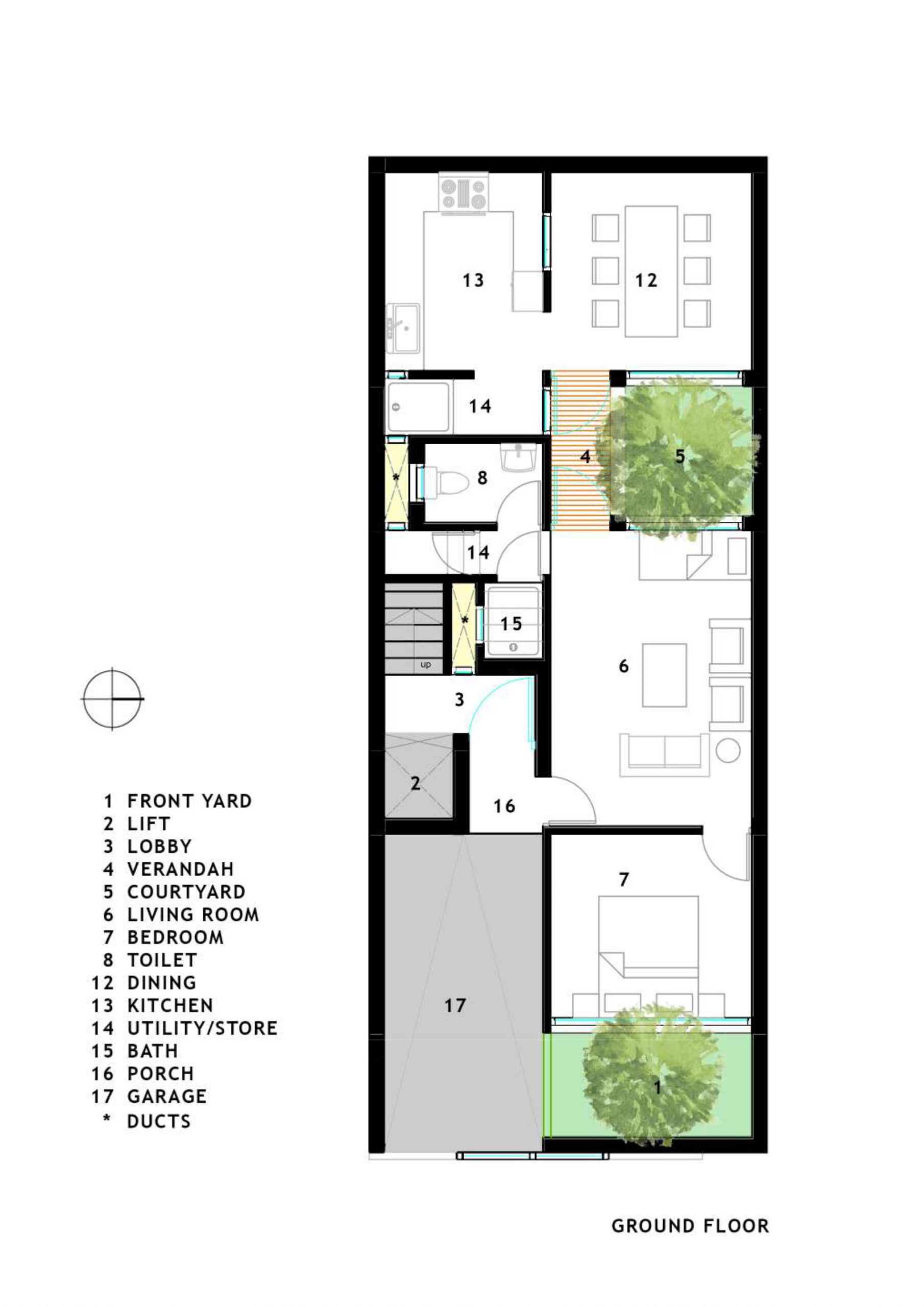
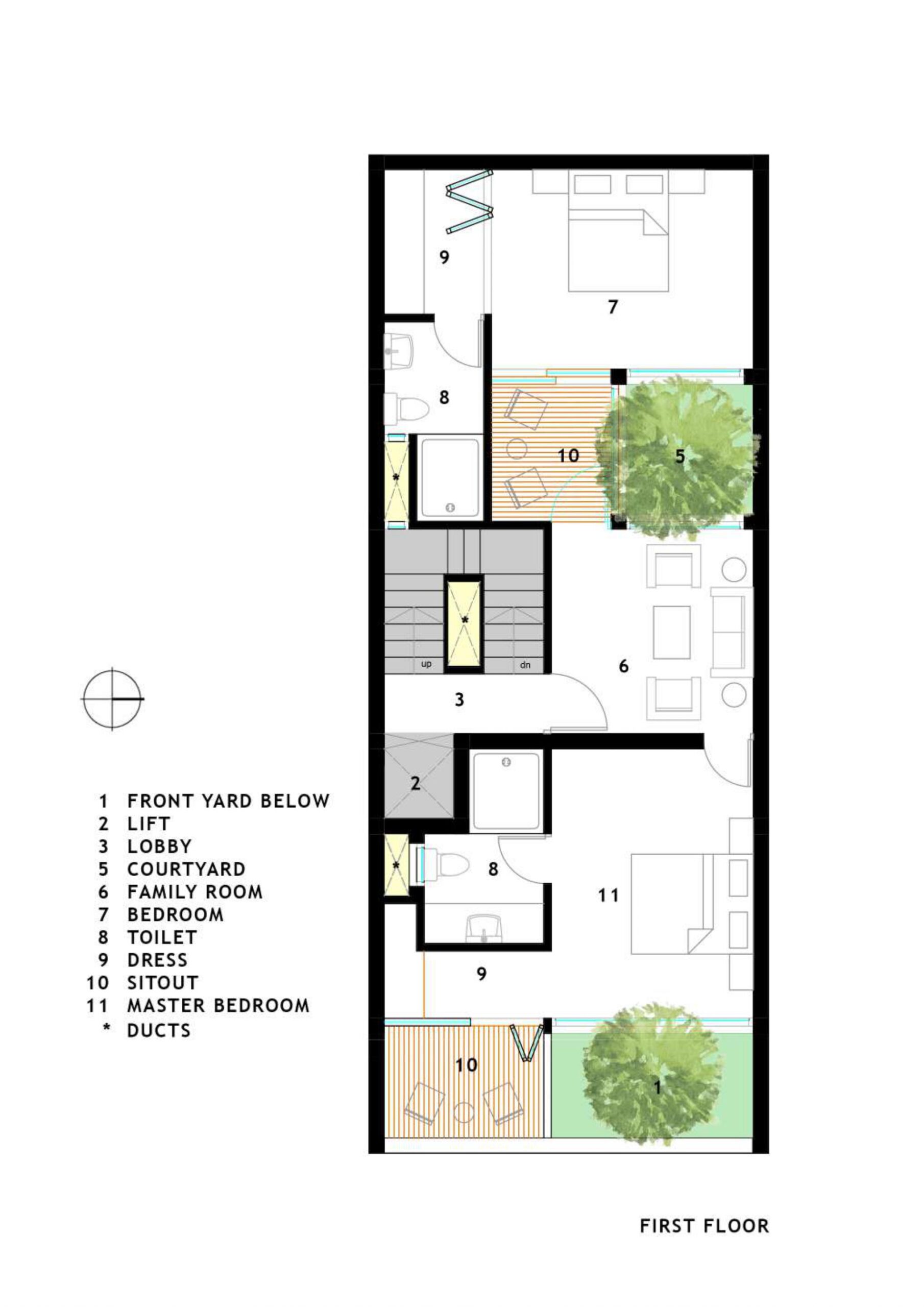
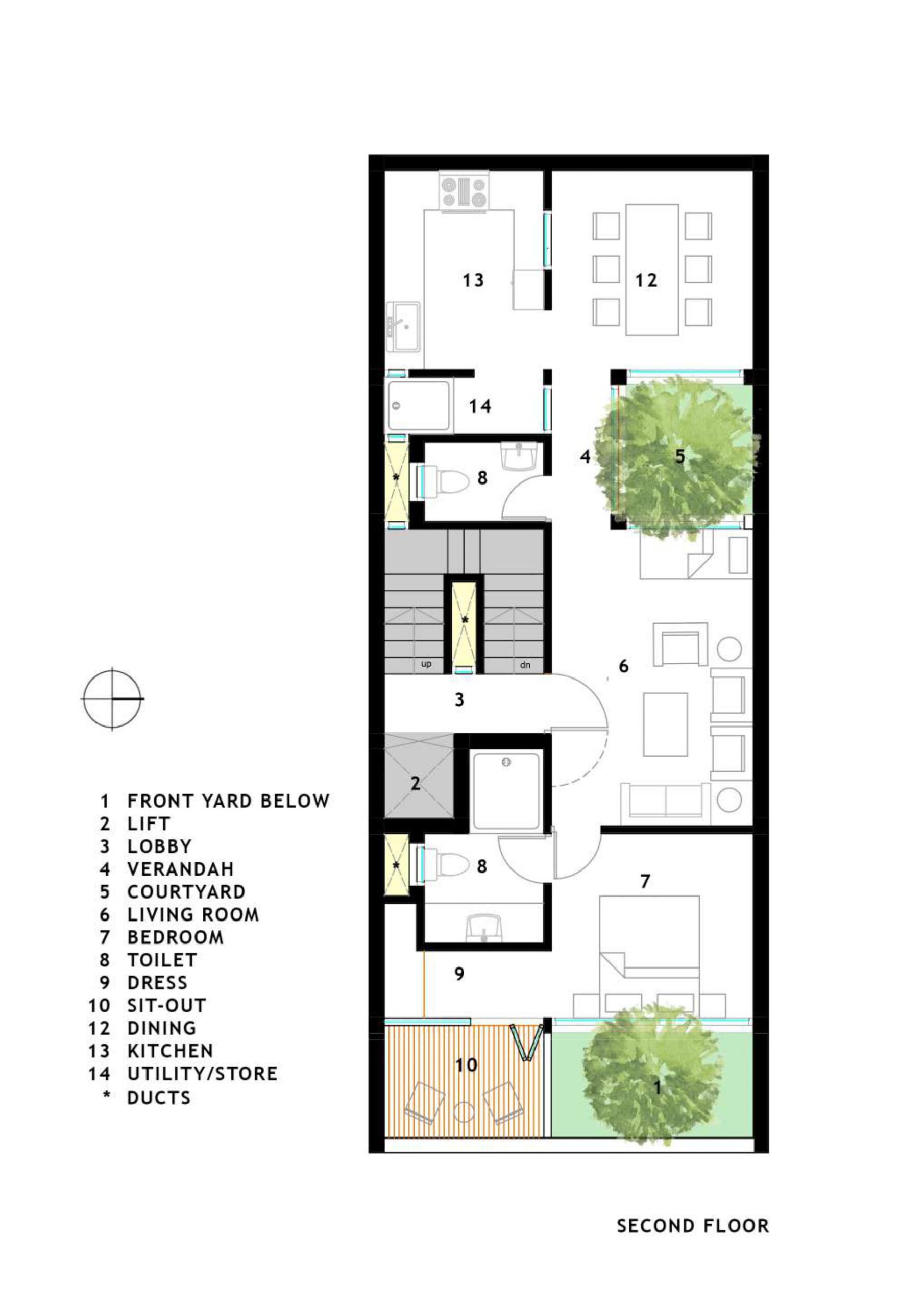
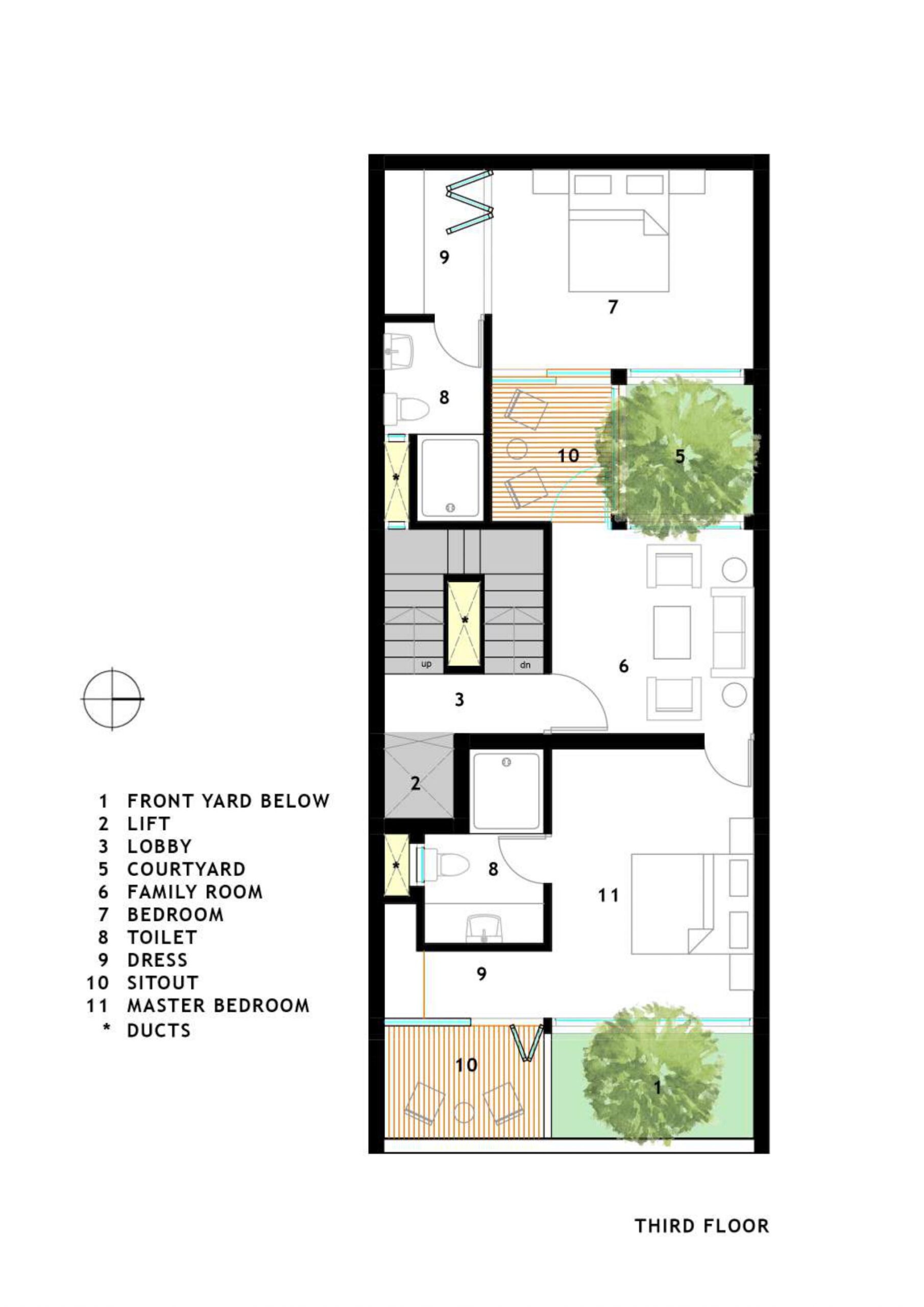
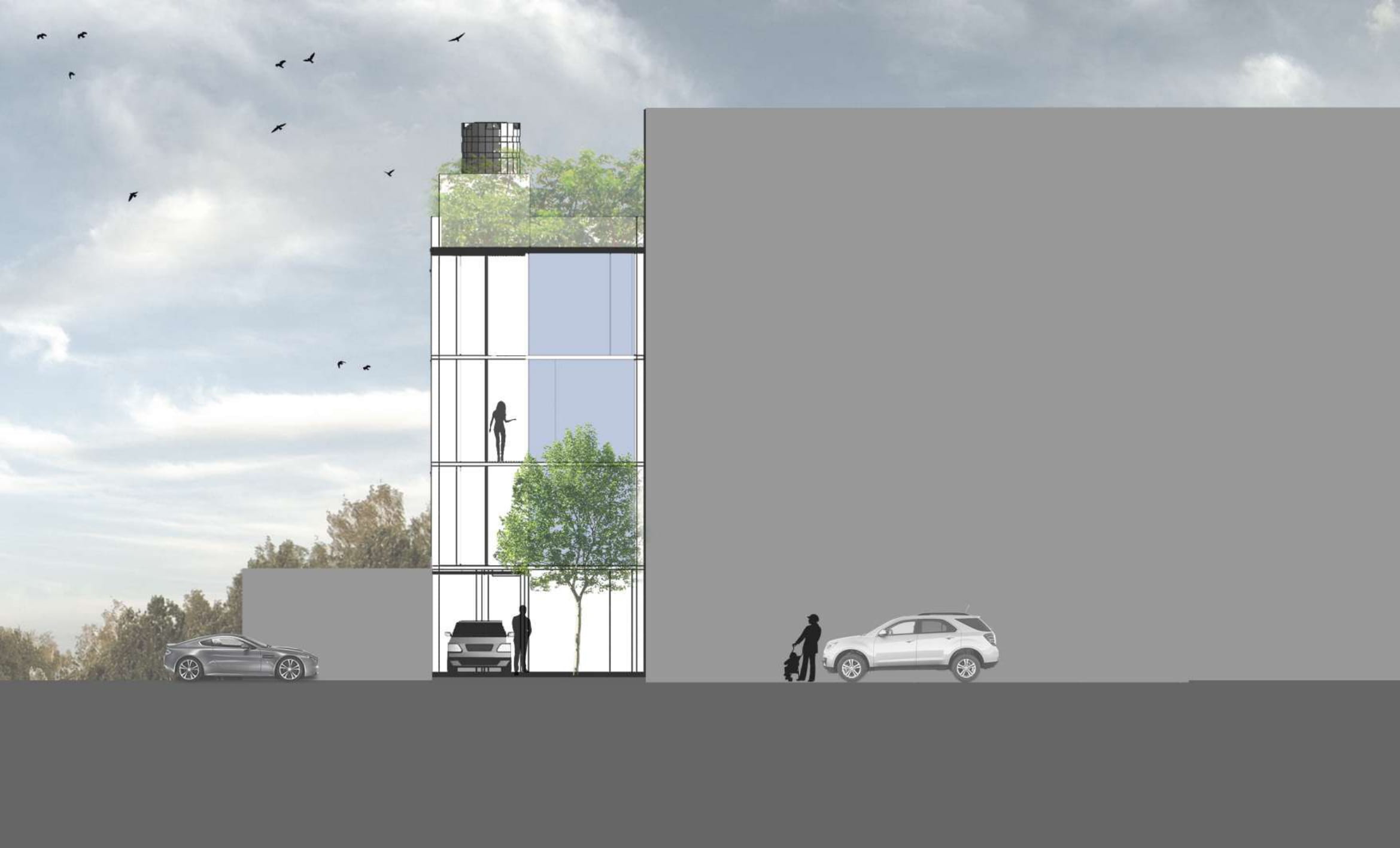
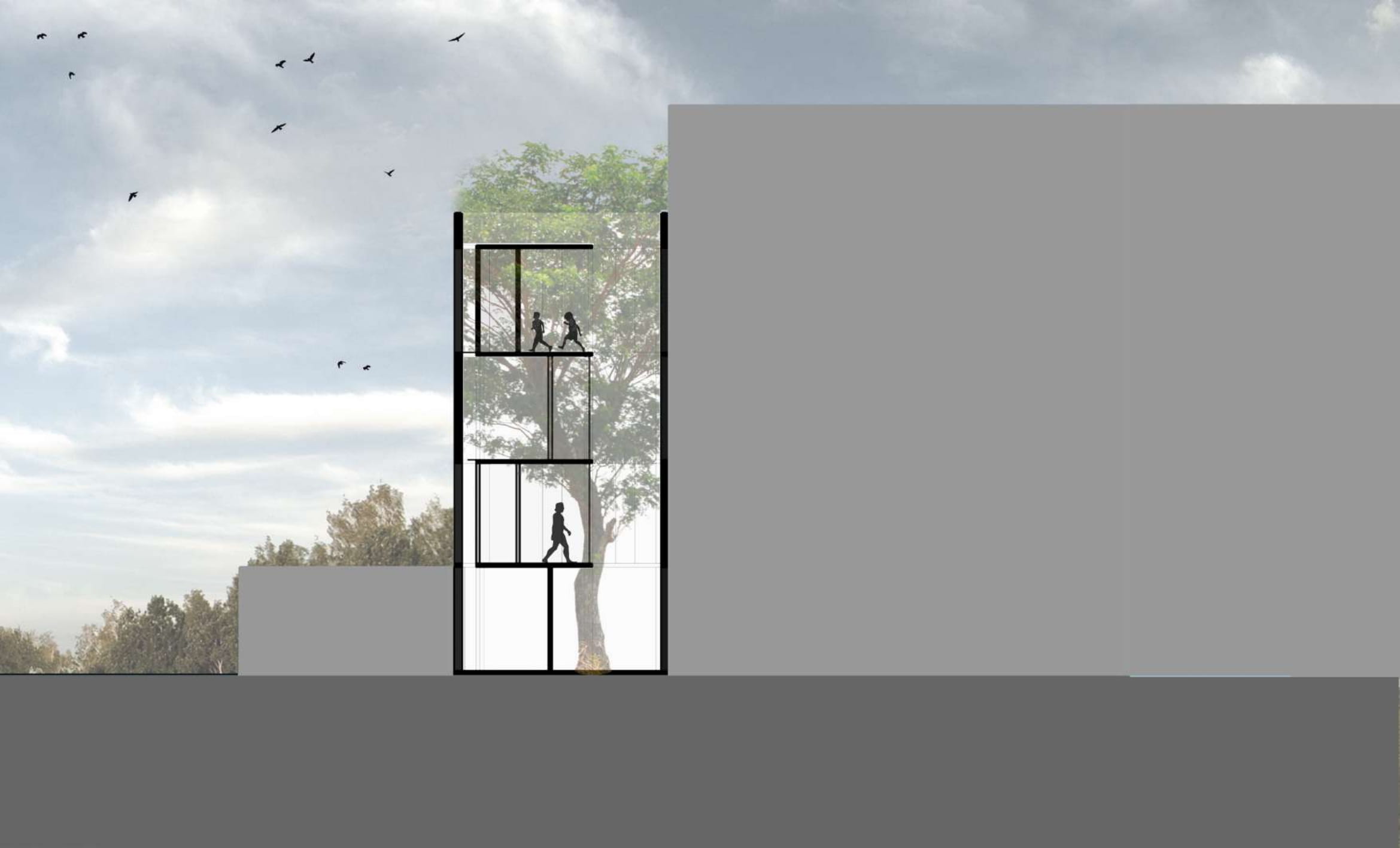
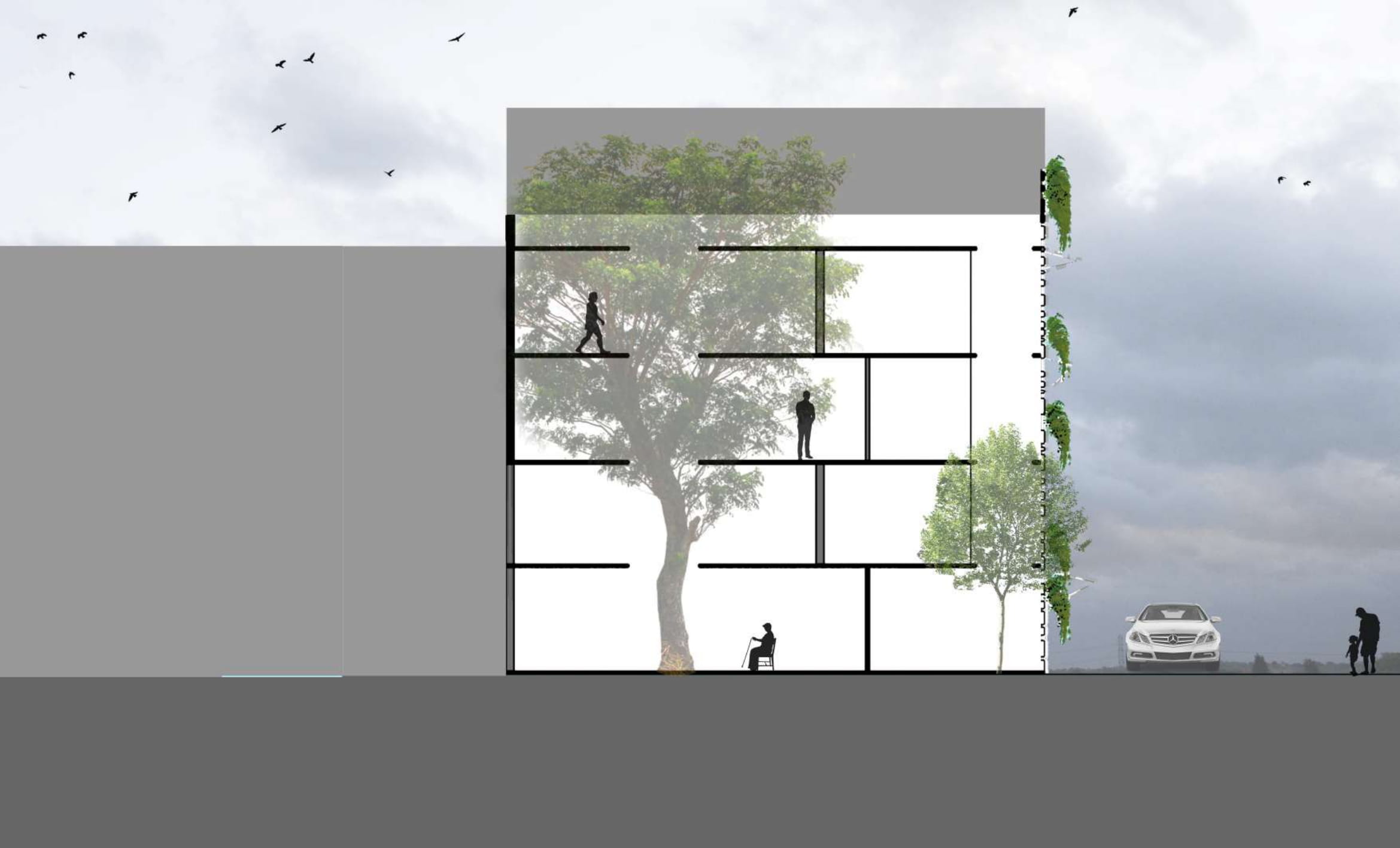
Images
